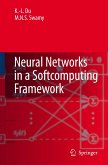In the context of network theory, Complex networks can be de?ned as a collection of nodes connected by edges representing various complex int- actions among the nodes. Almost any large-scale system, be it natural or man-made, can be viewed as a complex network of interacting entities, which is dynamically evolving over time. Naturally occurring networks include - ological, ecological and social networks (e. g. , metabolic networks, gene r- ulatory networks, protein interaction networks, signaling networks, epidemic networks, food webs, scienti?c collaboration networks and acquaintance n- works), whereas man-made networks include communication networks and transportation infrastructures (e. g. , the Internet, the World Wide Web, pe- to-peer networks, power grids and airline networks). This edited volume is a sequel to the workshop Dynamics on and of C- plex Networks (http://www. cel. iitkgp. ernet. in/?eccs07/) held as a satellite event of the fourth European Conference on ComplexSystems in Dresden, Germany from October 1-5, 2007. The primary aim of this workshop was to systematically explore the statistical dynamics "on" and "of" complex n- works that prevail across a large number of scienti?c disciplines. Dynamics on networks refers to the di?erent types of processes, for instance, prolife- tion and di?usion, that take place on networks. The functionality/e?ciency of these processes is strongly tied to the underlying topology as well as the dynamic behavior of the network.








